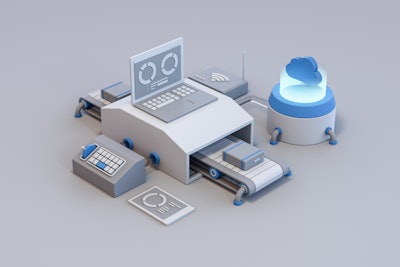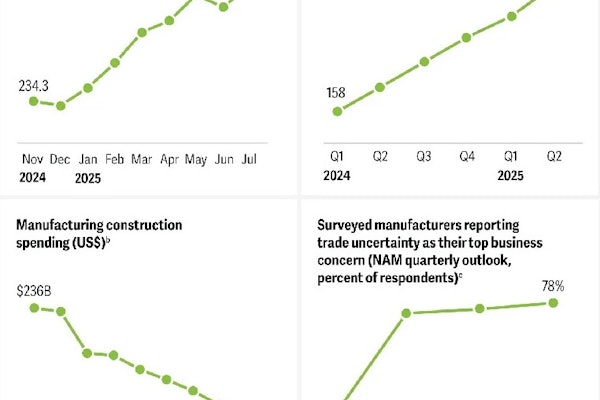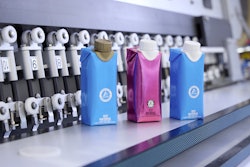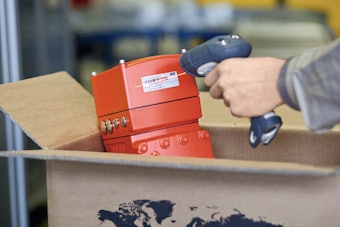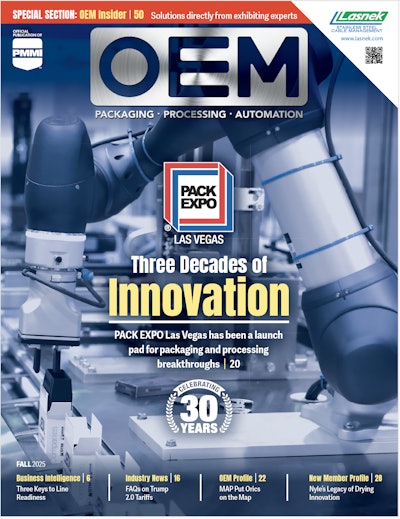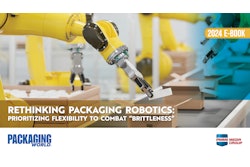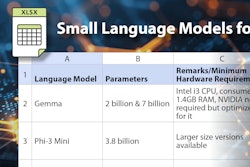Smart machines can tell end users a lot about what’s happening at the machine level, such as throughput, quality, uptime, and component health. But they can struggle to provide visibility into broader production challenges that occur over time and across multiple assets.
These challenges require utilizing data from multiple machines. But because data is organized and prepared in different ways across different machines, bringing all this data together, standardizing it, and contextualizing it can turn into a costly and time-consuming retrofit project.
To address this, some OEMs are going down a new route – data-enabled smart machines. These machines organize and prepare data in a standardized way so data can be combined and analyzed across multiple assets with minimal effort. This can help end users solve problems as they arise at the line, site, or enterprise level, or across specific fleets of machines.
Making smart machines ‘data ready’
Data systems have traditionally been designed to organize and prepare data for specific applications and use cases. Because of this, end users who want to utilize data from a smart machine also need to have a plan for how they will use data at the analysis level.
This creates added complexity and higher upfront costs, which often stop manufacturers from moving forward with integrating machine data during equipment procurement. However, end users can change their minds months or years after a machine has been running when they encounter production challenges they want to solve. Unfortunately, this integration can cost them tens of thousands of dollars.
Data-ready smart machines give end users the ability to move data out of their machines from the start, even if they haven’t yet identified applications or use cases for doing so. A few defining characteristics of data-ready smart machines make this possible.
- They use elements like smart objects that organize machine data into information models at the source. Traditionally, information experts would spend hours preparing data for analysis and making it digestible for people who aren’t data experts. Smart objects allow this organization to happen at the control layer, so the data coming from there is now structured, synchronized, and ready for analysis. This reduces time-consuming analysis, storage, and transfer at the information layer.
- A data-ready smart machine’s visualization platform brings this data together from different sources to deliver insights at the machine level. The software can also deliver those visualizations wherever else they’re needed, whether it’s at the edge on-premises or to remote locations via the cloud.
- Finally, remote-access technology closes the loop, turning insights into action. An OEM or other partner, for instance, can perform remote assistance, installation, programming, troubleshooting, or maintenance based on the information coming from the data-ready smart machine.
Unlocking the potential of smart machines
Data-ready smart machines empower end users to address the many potential issues that can pop up in production, which can be difficult to predict when deploying new machines. These issues can include unplanned downtime events, environmental factors impacting production and inconsistent equipment performance.
One early user of data-ready smart machine technology was a consumer-packaged goods (CPG) company that wanted to start measuring all the machine parameters involved in making its product.
Obtaining these measurements would be a difficult undertaking for most CPG producers, particularly this company, which uses a variety of processes to make its complex product at a high volume. However, having such extensive visibility into production would enable the company to identify and investigate at-fault machines and processes when a production or quality issue occurred.
The company used smart objects to capture machine parameters associated with each product produced, allowing it to troubleshoot production anomalies. This was significantly simpler than collecting and logging data on every machine parameter and unit produced, and then trying to tie them together after the fact if an issue occurred.
In some cases, data-ready machines have the potential to reduce machine-produced data volumes by up to 90% because data coordination is now happening in the controller. This can help them reduce costs associated with cloud storage and data scientists who organize and prepare data.
A bigger role for OEMs
Today, amid ongoing cost pressures, market disruptions and talent shortages, end users are turning to OEMs to play a more active role in their day-to-day operations and to serve as trusted advisors.
Data-enabled smart machines can help OEMs do just that. The insight-ready machines create a foundational approach for organizing and contextualizing data and moving it outside machines to help end users more easily solve production challenges. The machines can also make sure issues are addressed promptly using remote monitoring and support.
Additionally, along with data-ready smart machines, OEMs can give end users standardized models for common KPIs like OEE and energy usage. This allows end users to consistently measure these KPIs so they can do apples-to-apples comparisons of machine performance across lines or sites, making it easier to identify what machines are underperforming or bringing down operations.
Built for the future, ready now
With data-ready smart machines, there are no longer concerns about what data will be needed from a machine in the future or how much it will cost to get. Instead, the machines can give end users the flexibility they need to get the data they want when they need it, with minimal foundational expense.
